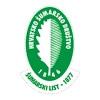
DIGITALNA ARHIVA ŠUMARSKOG LISTA
prilagođeno pretraživanje po punom tekstu
| ŠUMARSKI LIST 7-8/1972 str. 12 <-- 12 --> PDF |
LITERATURA 1. Bojani n S., Učešće kore kod jelove oblovine raznih debljina i njen odnos prema debljini stabala od kojih oblovina potječe. Drvna Ind., 11—12, 1966. 2. Dćrfold i A., Cser meretesoportes vägasbecsles es välasztktervezs. Erd. kut. 1—3, 1967. 3. Emrović — Glavač — Pranjić, Tablice drvnih masa za poljski jasen. Izd. Poljoprivredna šumarksa komora NRH 1962. 4. Gaye r — Fabricius , Die Fcrstbenutzung, 14. Auflage, Berlin 1949. 5. Klepa c D., Istraživanja o debljini kore u šumama hrasta lužnjaka i kitnjaka. Sum. List, 3—4, 1957. 6. KniggeW . u. Schul z H., Grundriss der Forstbenutzung. V. P. Parey, Hamburg u. Berlin 1966. 7. Ryme r — Dudzinsk a T., Beziehung zwischen dem Prozent der Rindenmassc mit einigen Merkmalen von Bäumen in Abhängigkeit vom Bestandesalter. Folia Forestalia polonica. Seria A — Lesnictwo, zeszyt 16, Warszawa 1970. 8. Ryme r — Dudzinsk a T., The relationship between the percentual volume of bark and percentual thickness of bark at d. b. h. in pine stands. Zeszyty nankowe szkoly glownej gospodarstwa wiejskiego w Warszawie. Lesnictwo zeszyt XI, Warszawa 1968. 9. S a 1 m i n e n J., On cubing coniferous saw logs on the basis of measurements on the bark. Folia Forestalia 51. Inst. For. Fenn., Helsinki 1968. 10. Serda r V., Udžbenik statistike. Školska knjiga, Zagreb 1961. Summary BARK THICKNESS AND PERCENTAGE OF THE NARROW-LEAVED ASH (Fraxinus angustifolia Vahl) ROUNDWOOD The author deals with the problem of bark thickness of roundwood (logs and pitprops) cf Narrow-leaved Ash (Fraxinus angustifolia Vahl) stems of 7—57 cm. diameters over bark (o.b.). The author examined first whether the bark thickness of the roundwood of specified diameter depends on the diameter breast high (d.b.h.) of trees from which the roundwood originates. Examined was further the relation between the ´bark thickness cf the stemwood and branchwood of the same diameters. The material to be examined came from the mixed stands of Narrow-leaved Ash, Pedunculate Oak and Field Elm growing on wet sites. For examination were used 259 Ash stems from 20—60 cm. d.b.h. Double bark thickness was measured on felled trees in the middle of individual sections with mean diameter o.b. from 7 cm. upwards. Measurements included 3,679 sections of stemwood from 7—57 cm. mean diameter o.b., and 2,202 branch sections from 7—30 cm. mean diameter o.b. The length of sections amounted in stemwood to 2 m., and in branchwood to 2 and 1 m. By variance analysis cf arithmetical means of double bark thickness of the roundwood of specified diameter, which was sorted out according to diameters b.h. of the stems from which the roundwood originated, it was found that the bark thickness of roundwood of the same diameter did not depend on the diameter b.h. of stems from which the roundwood (logs and pitprops) was worked up. For the B5*/o confidence level and ± l´/o precision there existed no significance at all, while for the + 5% precision the significance existed only in one diameter sub-class (Tab. 1). Accordingly, it can be concluded that the bark thickness of roundwood of specified diameter depends only on the diameter of roundwood. This analysis relates only to the roundwood (> 7 cm.) of stems. Considering this result, it suffices, when determining the bark percentage in roundwood, to know the diameter of roundwood. The results of the investigaion show further that there exists a significant difference between the bark thickness of stemwood and branchwood of the same diameters. The bark cf branchwood is thinner in all diameter classes, and this difference ranges from 5.7 to 10.0%. However the difference of the percentage of bark in relation to the volume of wood and bark in stemwood and branchwood amounts to a maximum of 2.2°/o (tab. 2). |